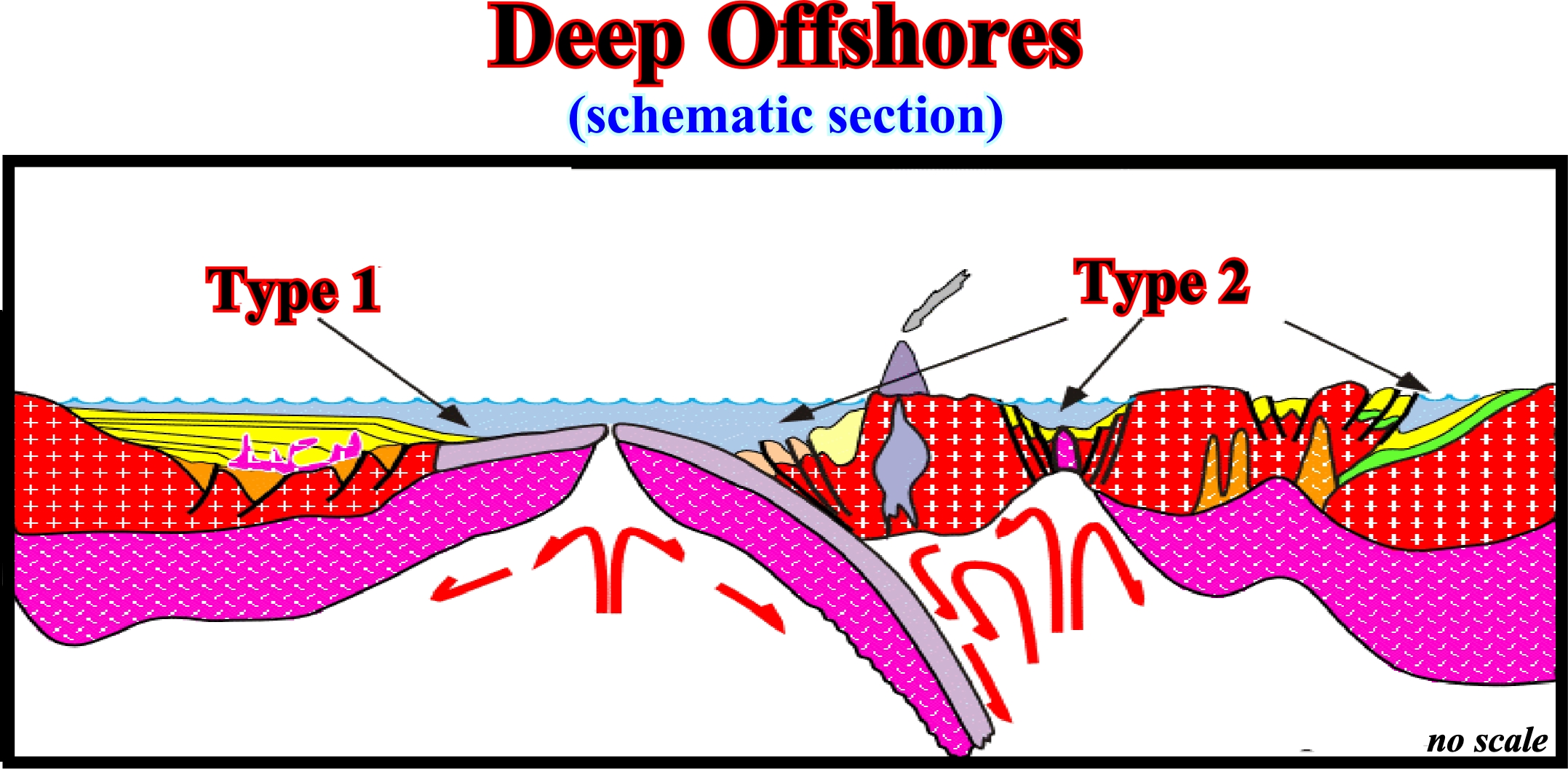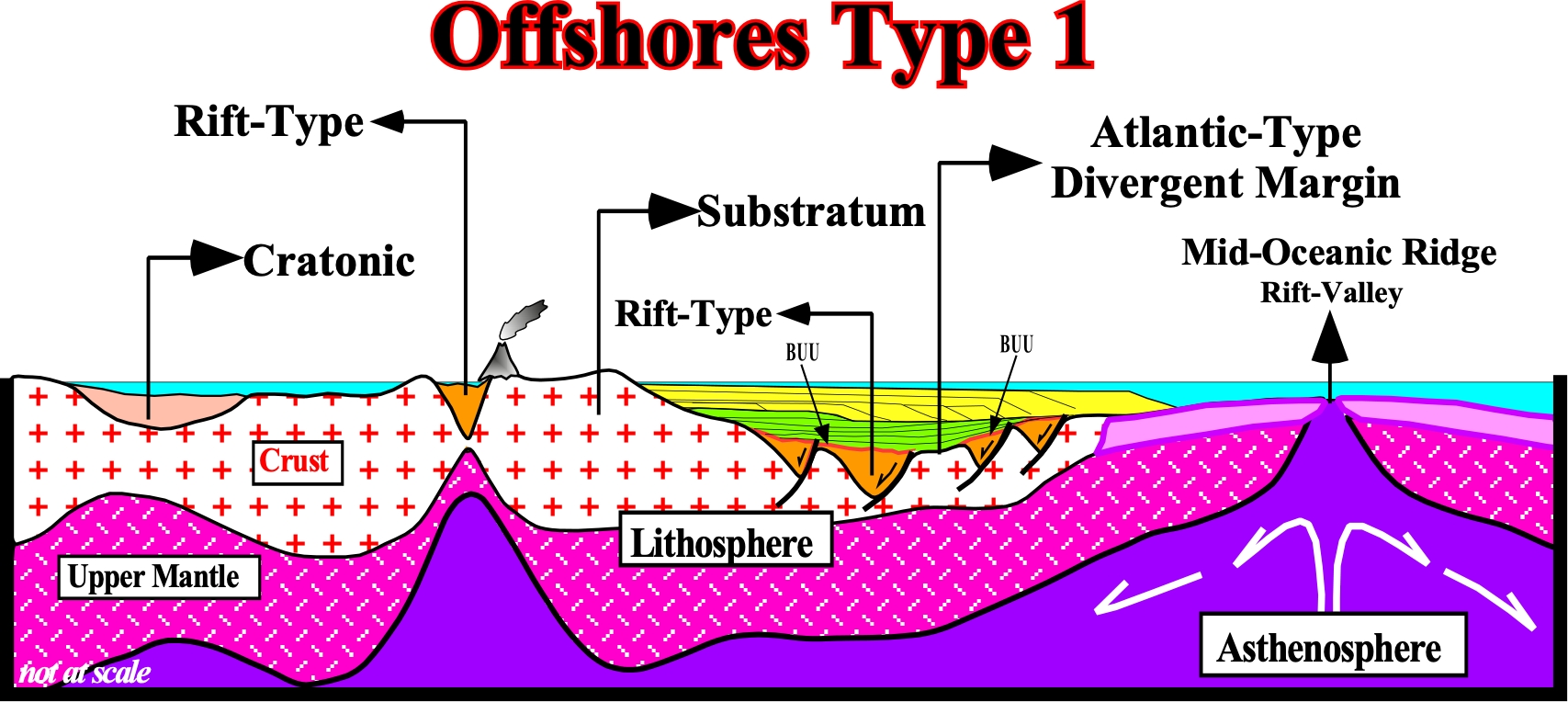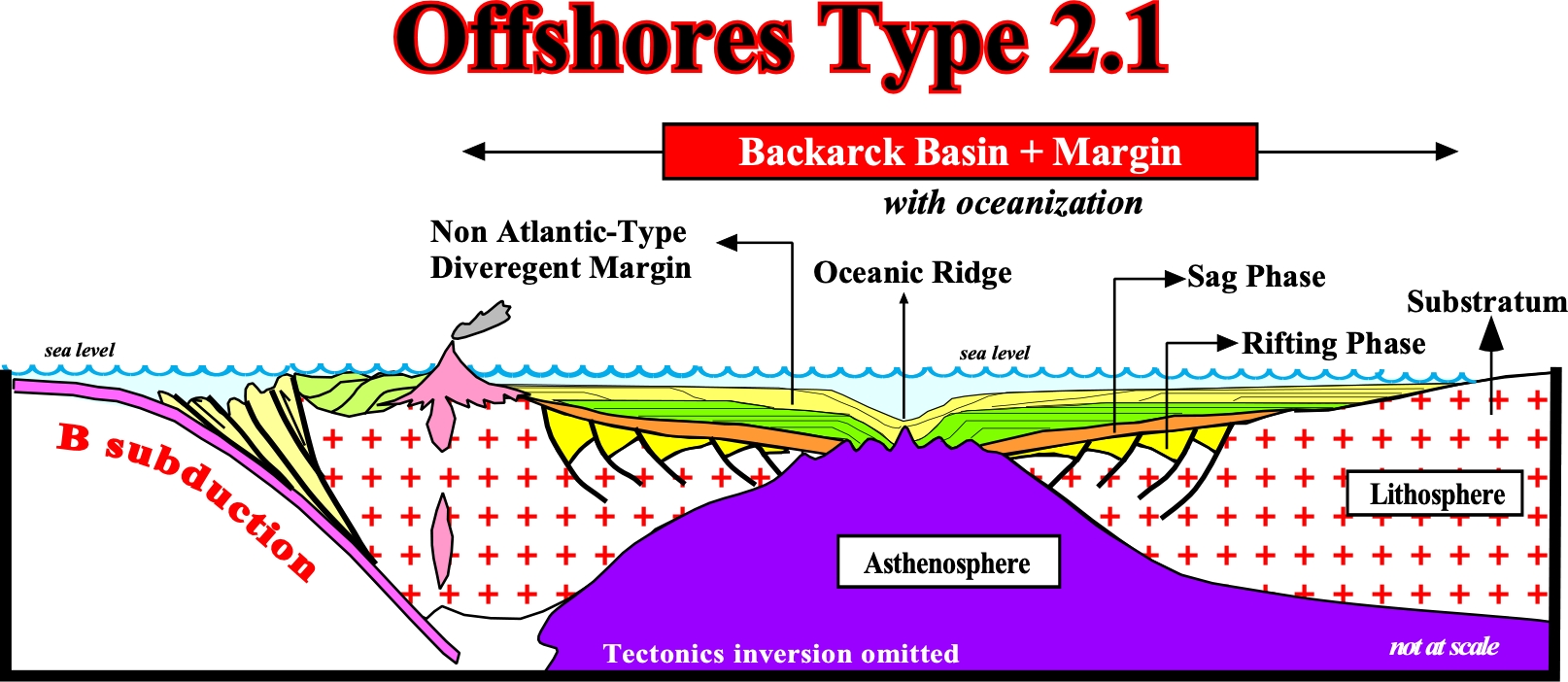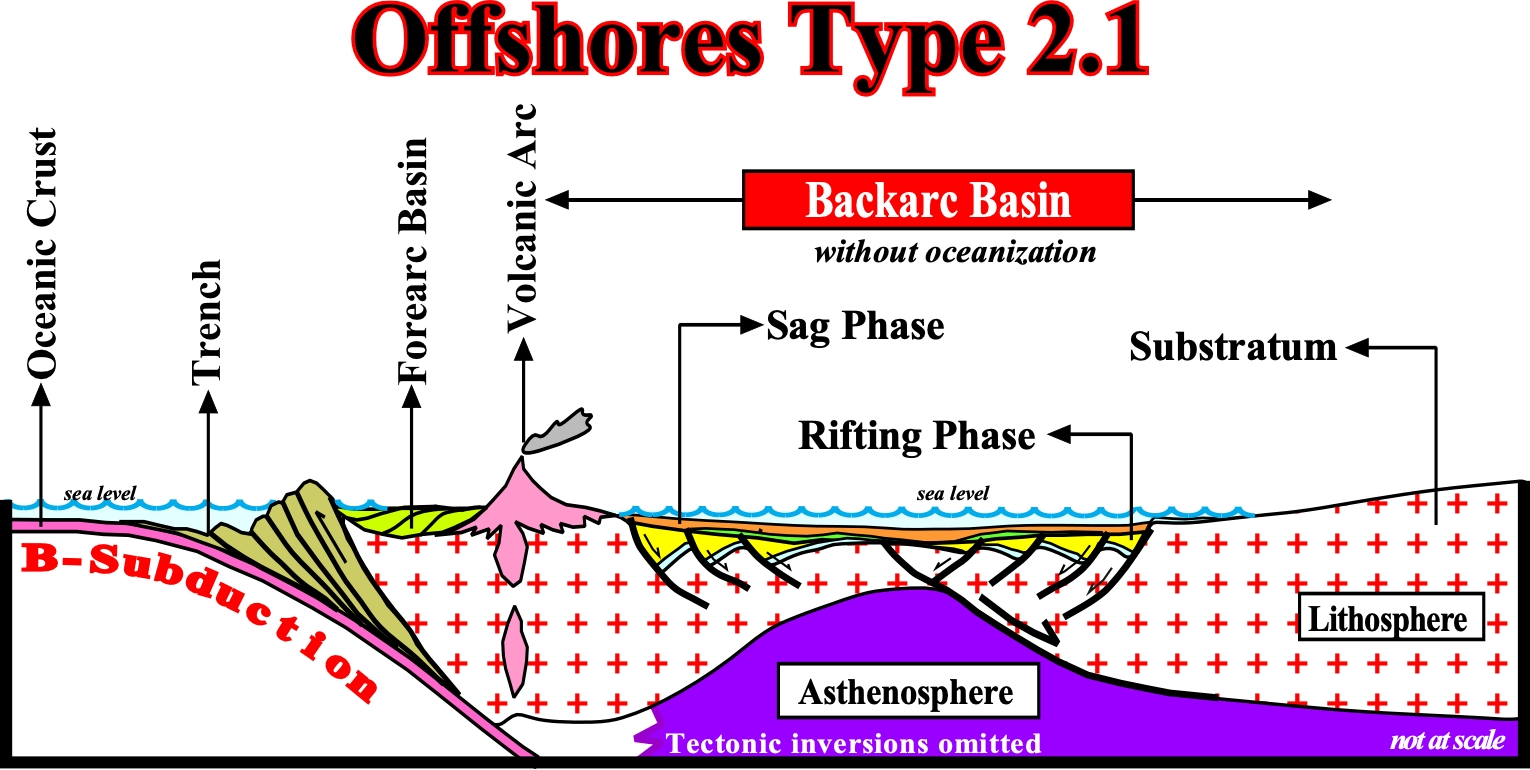

Schematic Cross-sections
Offshores Type 1 & Type 2

Offshores Type 1

Offshores Type 1 are associated with the breakup of a supercontinent, i.e., with the formation of new oceanic crust. The rift-type basins are developed during the lengthening of supercontinents. The rift-type basins predate the breakup unconformity (BUU), which is, generally, located at the top of the rift-type basin sediments. The breakup of the supercontinent lithosphere individualizes two lithospheric plates separated by a rift-valley. Two Atlantic-type divergent margins are deposited accreting the continent seaward. In each Atlantic-type divergent margin, an aggradational interval, induced by a composite marine ingression (absolute sea level rise), is recognized at the base, which is covered a by a progradational interval, induced by composite marine regression (absolute sea level fall). The interface between these two sedimentary phases is emphasized by a major downlap surface along which potential marine source-rocks can be deposited.
Offshores Type 2
Offshores type 2 are associated with B-subduction zones (Benioff). They can be found in forearc and backarc basins, accretionary wedges and oceanic trenches. In backarc basins, two different offshores type 2 can be considered depending if there is or not oceanization, i.e., formation of a marginal sea and a Non Atlantic-type Divergent Margin.

In offshores type 2.1 there is not oceanization behind the volcanic arc. There is just a backarc basin, i.e., the non Atlantic-type divergent margin is absent. Contrariwise to the offshore type 2.2, in these offshores, generally, the water depth is, relatively, small. High water depths are found in forearc zones (accretionary wedge and oceanic trench).

Offshores type 2.2 are associated with an oceanization behind the volcanic arc created by the B-subduction zone on the overriding lithospheric plate. Such oceanization induces the development of a non Atlantic-type divergent margin (formed in a compressional tectonic context , i.e., inside a megasuture, which is not the case of Atlantic-type divergent margins) over the backarc basin.
Send E-mails to carlos.cramez@bluewin.ch with comments and suggestions to improve this atlas.
Copyright © 2001 CCramez
Last update:
2022